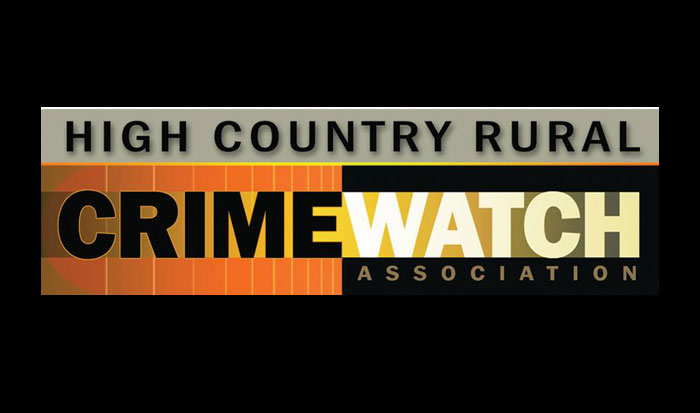A Path for Crime Watch Associations?
The High Country Rural Crime Watch is just one of many Crime Watch groups that exist not only in Alberta but all across Canada. In Alberta, HCRCWA is a member of the Alberta Provincial Rural Crime Watch Association (APRCWA): www.ruralcrimewatch.ab.ca
Prior to 1993, Rural Crime Watch Associations were not linked by a provincial body; in 1993 it was decided a province wide umbrella group was needed to support and enhance crime prevention, so a committee was formed to produce bylaws and policies. On March 19, 1995, the APRCWA received official recognition as a Society and the APRCWA Organization has become a supportive Organization for Member Associations.
The focus of the Rural Crime Watch program still provides the extra “eyes and ears” for the RCMP, however the focus has changed. The focus is now promoting Crime Prevention through awareness, education and encouraging reporting of suspicious activity when observed.
There is excellent information to be found on their website including a Crime watch app that can be downloaded to your phone which provides an easy way to send notification about a crime.
Additionally, there is a Canadian organization – The Canadian Municipal Network on Crime Prevention (CMNCP): safercities.ca/home. They are a community of practice created to build capacity and mobilize Canadian municipalities to prevent and reduce crime and to foster community safety and well-being. CMNCP aims to increase investment in effective, evidence-based and collaborative crime prevention strategies in municipalities. Membership in this organization is optional.
Why am I telling you about this? I know we tend to look no further than our local HCRCWA and the results of crime without realizing there is extensive information around crime prevention and reduction of crime not only in Alberta but across Canada.
Darlene Roblin, Emergency Services Manager, Foothills County, and I attended an online session on Rural Crime Prevention held over 3 days in January/February presented by the CMNCP and were provided with information on organizing, planning, and developing a Community Safety and Well-Being plan.
Seventy-seven people with all types of roles (Mayor of Lac la Biche; councillors from Manitoba; RCMP (National); Government of Alberta; York Regional Police, Ontario; First Nations Policing, Nanaimo; Kent County RCMP New Brunswick, several places in Alberta including Wetaskiwin, Innisfail, Beiseker, Red Deer, Strathcona and Foothills Counties.) We had the opportunity to meet in breakaway groups to discuss topics and provide feedback to the larger group. Each breakaway group consisted of people across Canada so it was a great opportunity to hear what they had to say about their specific area and what they are doing.
One of the ways to prevent crime is by working with youth early on; this will make a difference in crime rates.
Some jurisdictions have their program up and running and have had success in reducing crime by working with youth and implementing positive interactions. Kent County, New Brunswick RCMP gave a presentation on how they interact with the public through attending festivals, ceremonies, parades, and large community functions to create relationships in the community.
To create a plan one of the initial action items is to create an advisory panel which could include RCMP, Mental Health partners, First Nations people, Seniors, youths, and residents of the community. This panel would provide information regarding the issues they see or experience within the community.
There was a presentation given by Koren Lightning-Earle, a lawyer and member of Samson Cree Nation, about creating relationships with First Nations people. This presentation made me realize how important it is to engage First Nations people in advocating for programs that work with youth.
The CMNCP included excellent documentation during the training that provided a “blueprint” for where to start and how to set this program up.
It will take resources – this program isn’t something that will happen on its own. It requires a role to coordinate, to create a plan, and then ensure that it is sustained. The benefit to the community is less crime, and youth that may have gone down a path of drugs and crime can become valued members of our community instead.
Lyn Dean, Vice-President of the HCRCWA, has written this month’s article passing along her learnings from a meeting of Crime Watch Associations across Canada.


























